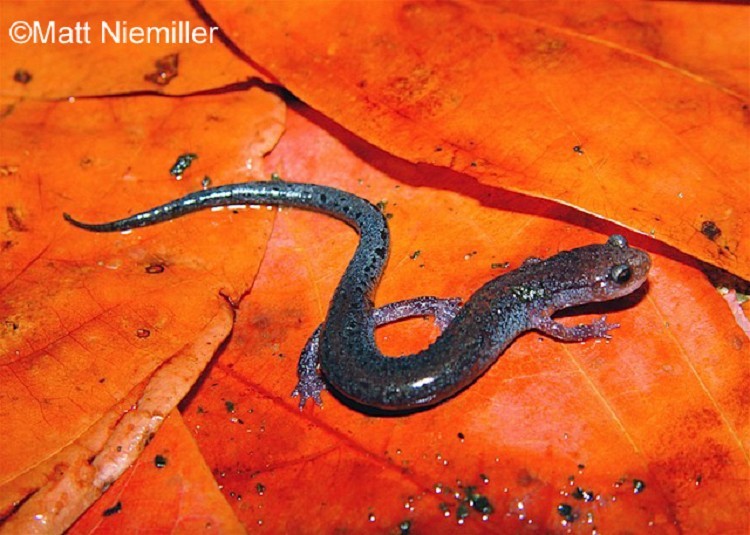Northern Zigzag Salamander
Plethodon dorsalisOccurs in the eastern two-thirds of TN below 2500 ft. Zigzag Salamander fairly recently split into Northern and Southern Zigzag (P. ventralis) Salamander, which appear identical.
Description: A small, dark-colored salamander (2.5 to 3.5 inches in length) with a red or orangish wavy pattern, or “zigzag”, extending from the neck down the back to the base of the tail where it straightens out. This species also occurs in a brownish-gray color morph without the zigzag. Small white flecks occur on the back and sides giving a metallic appearance. The belly is gray or black with orange or reddish speckles.
Similar Species: Eastern Red-backed Salamander has a straight-edged dorsal stripe. Southern Zigzag Salamander distinguished from identical Northern Zigzag Salamander by the range and genetic analysis.
Habitat: Prefers moist habitat of rocky hillsides, forested slopes, leaf litter, and entrances to caves.
Diet: Small invertebrates, especially spiders and beetles.
Breeding information: Northern Zigzag Salamanders breed terrestrially during the fall and spring. Females lay 3-9 eggs in underground cavities or in cave entrances during the spring and summer. Females remain with the eggs until hatching in the fall.
Status in Tennessee: One of the more abundant salamanders in TN.
Fun Facts:
- During the warmer months of the summer, these salamanders retreat to the mouths of caves and to underground burrows where it is cooler and moist.
Best places to see in Tennessee: Moist, rocky slopes in middle Tennessee, or Cumberland Plateau.
